We have to have our vehicle in the best conditions always (we do not have to worry about our car only when we go to the ITV). It is the duty of the user and owner of the vehicle to keep it in the best possible conditions. As an introduction, and so that we all have it clear, we will explain the cataloguing of defects:
- Slight Defect: problem does not prevent passing the ITV favourably. There can be as many slight defects as possible.
- Serious Defect: problem that must be rectified and returned to the ITV for checking. Only allowed to circulate from the ITV to home and back (obviously you can go home and so on, but you must not circulate with the vehicle).
- Very Serious Defect: as with the Serious Defect, it must be rectified and returned to the ITV for checking. The difference with the Serious Defect is that the vehicle must leave the ITV in a crane due to the danger to self and others that the circulation of the same and the inspection is Negative.
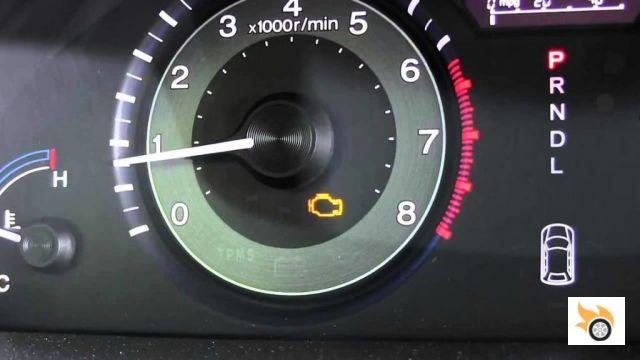
1 MIL Witness (Malfunction Indication Lamp)
Since November 2016 it is a serious defect to have the engine warning light on the vehicle's dashboard. This light indicates either that there is a fault present in the engine or that there has been one since the last time the faults were reset with the diagnostic machine. The causes of this light coming on are diverse. Almost all of them have to do with fuel injection, so with this fault on the car, and according to the MOT Inspection Manual, it is not possible to carry out the smoke test. This means that the vehicle will have an unfavourable result. This warning applies to both diesel and petrol vehicles.
The mischievousness can make us think that if we disconnect the bulb, or cover it in some way, the inspector will not notice it when we go to the ITV. This is false, as the inspector must check that all the lights on the dashboard check correctly.
You should not drive when a red light is permanently lit, as this indicates a problem that affects safety.
As a note, add that if the light is on, it is for a reason. If we ignore it we can make things worse in the short or medium term. To avoid the unfavorable is necessary to go through workshop and that with the machine diagnosis is performed a check. Often a simple "fault clearance" is sufficient, as the warning light indicates that there is or has been a fault, but the fault does not necessarily have to be present.
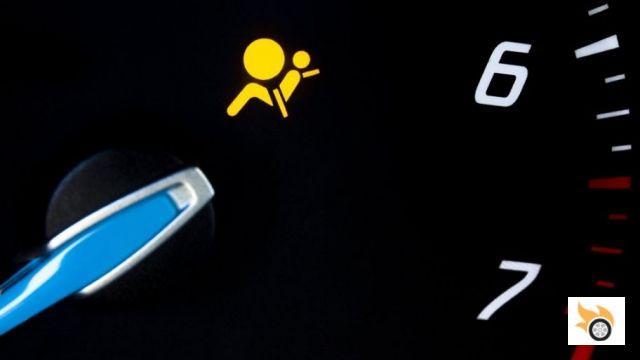
2 Airbag warning light
The airbag failure warning light indicates that the airbag is malfunctioning. The causes, as in all cases, can be various (bad connections, control unit failure, etc.). What is certain is that if it is on, it is possible that, in the event of an impact, the airbag does not work correctly. As in the previous case, the picaresque will lead us down the same path. The answer is the same, the inspector must check that it checks correctly.
Before going to the ITV it is advisable to check if the lights check and if any of them stay on after starting. By the way, be careful with the purchase of seat covers when our car has seats with side airbags. There are special seat covers that have an area adapted for the airbag. If you do not have such an adapted area, the installation of these seat covers is a serious defect.
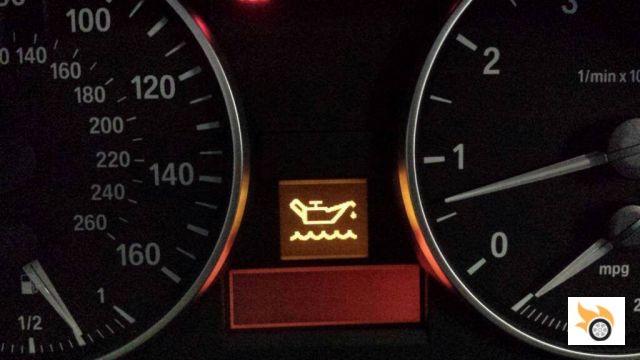
3 Low / high oil level
One of the ITV requirements that a diesel vehicle has to meet is to check the oil level to see if the engine is in good condition and to be able to carry out the smoke test (opacity test in diesel vehicles). As a clarification, we all know that the oil level is checked with the engine stopped and having rested for a few minutes. As this is unfeasible, an estimate is made.
- If the oil mark on the dipstick is found at the minimum, it can be understood that when the oil rests, the level will rise and it will be between the minimum and maximum marks.
- If the mark is found at the maximum, for the same reason, at rest, the dipstick will mark more than it should, so the engine is not able to pass the smoke test.
- If the mark is outside the maximum and minimum values, the vehicle is considered unsuitable for the smoke test.
Both for the MOT and for driving the vehicle in good condition, it is advisable to have the oil level at the correct level. If the oil level is below the minimum level, this can lead to engine seizure, but if it is above the maximum level, this can lead to self-fuelling with oil in the case of diesel or destruction of the catalytic converter in the case of petrol. In other words, expensive breakdowns, especially in modern vehicles.
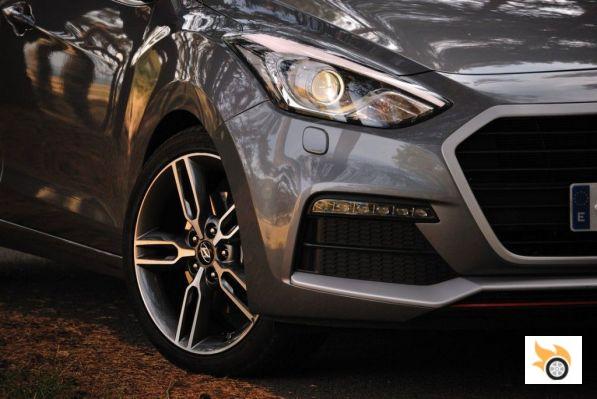
4 Lights, headlights and headlamps
That lights and rear-view mirrors are an important part of the vehicle is beyond dispute.
Every light must have the right colour and be in the right quantity.
- Front position, dipped and main beam headlights: white mandatory for vehicles registered after 26/07/1999. In other words, cars registered before this date can have yellow bulbs.
- Both dipped beam and at least one position and main beam must work.
- A high dipped beam is a serious defect (because it dazzles), but a low beam is a minor defect.
- Direction indicator lights / hazard warning signal: car yellow. They should flash at normal speed. If they are flashing very fast, this indicates that a bulb is burnt out. Sometimes the bulbs lose the color that covers them and become white, so you have to be careful. When the emergency signal is activated, all four indicators must work at the same time.
- Reversing light: white. There may be one or two reversing lights, or none if it was not fitted at the factory (if it was fitted later and does not work, it is not considered a defect).
- Front fog lights: white or yellow, both must be the same colour. There can be two lights.
- Brake lights: red. There may be two or three brake lights. The third light is compulsory for vehicles registered after 01/10/2000. Cars registered before that date that have a third brake light must have it legalised in the technical data sheet. At least one must be working.
- Number plate lights: one or two white bulbs. In ITV if none of them are illuminated it is a minor defect.
- Rear position lights: there must be two bulbs or more (always even number) and red. At least one must work.
- Rear fog lights: red, there can be one or two bulbs.
- Reflectors or reflectors: two red reflectors at the rear are compulsory, they can be on the pilot.
Lights and headlights that have a hole that exposes the bulb are not valid. It is also not valid to have transparent or coloured films attached to them.
Something very common is the tinting of headlights, due to the material of manufacture of the same; they are usually plastics that with the effect of time and the sun are deteriorating. This can be a serious defect if when checking the lights in the regloscope, the bulb is not able to make the light beam correctly. When this is the case, you will see an irregular beam of light that can cause the road not to be illuminated at night or dazzle the person in front of you.
Before going to ITV (and as always to circulate safely) it is advisable to check if all the lights of the vehicle work. If the headlights of our car are tinted, it is advisable to perform a professional polishing and a subsequent lacquering (the latter is to withstand longer).
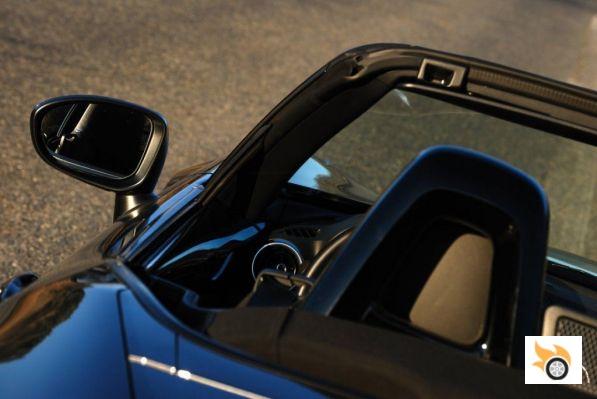
5 Glass and mirrors
All the vehicle's windows and mirrors must have an approval mark. In the case of the windscreen, there must be no cracks or "chinks" in the driver's field of vision, and no sun visor films that are not on the original glass. Approved tinted films can be fitted to the vehicle's windows, with the exception of the windscreen and the driver and passenger windows. To find out if they are homologated, you can check that they have a homologation mark consisting of a sticker with the brand name of the films and a specific paper for the vehicle in question.
There are some cases in which these windows can be tinted, and it is for medical reasons, always with the approval of the General Directorate of Industry. It does not matter if the windows cannot be lowered, as long as they are up and the homologation mark can be seen, there is no defect.
The mirror itself must be in good condition. This means that mirrors that have no housing are not a serious defect. However, it is a serious defect if the mirror glass is cracked or if it is a glass mirror (as the reflection will not be the same and the distances of the objects reflected in it will change).
Next week we will look at the next five problems. For later you can propose ideas for me to solve them in future articles.

























